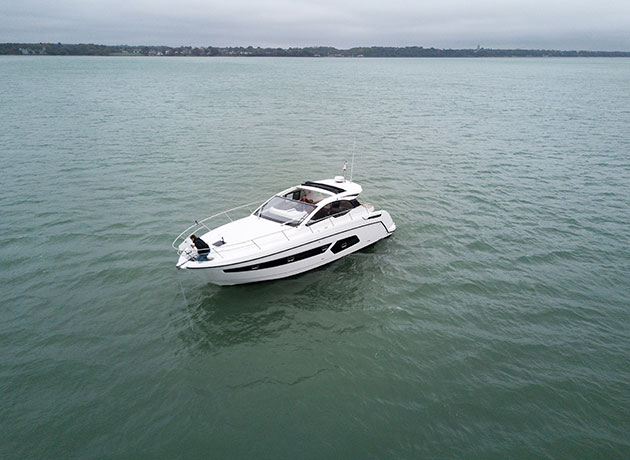The definitive guide on how to tie up your boat correctly
A wander around any marina will reveal a hundred different variations of how to tie up a boat and to be fair there is no universal one-size-fits-all answer.
However, while many of the solutions on show are perfectly valid, it’s clear that there are also plenty of boat owners with very little understanding of what the lines are supposed to do and in some cases it’s a minor miracle that the boat’s still there when the owners return.
For an alongside berth in a non-tidal marina, or one with floating pontoons, you need a minimum of four lines. The bow line should lead forward from the bow cleat to a cleat on the pontoon a short way in front of the boat.
The stern line should lead aft from a stern cleat to a pontoon cleat a little way behind the boat. These bow and stern lines are to keep the boat alongside.
Then comes a pair of springs, whose purpose is to stop the vessel surging fore and aft in the elements.
The correct terminology for spring lines always causes some debate. As far as I am concerned a line which stops the boat from moving backwards is a stern or aft spring and usually runs forward from the boat’s stern or mid cleat to a pontoon cleat several metres ahead of it.
One that stops forward movement is a bow or fore spring and usually runs from a bow or mid cleat to a pontoon cleat several metres astern of it.
I always like the bow and stern lines to have a touch of slack in them so that the boat is ‘relaxed’ on its berth and can move a little way out from the pontoon rather than being pinned against it, rubbing on its fenders all the time.
In contrast to this I like the springs reasonably taut so that any fore and aft movement is kept to a minimum. Most boats are tied up in this manner, but it is usually how the lines are set up on a cleat, know as the ‘lead’, that is incorrect.
This lead is very important as it ensures the correct loading of a cleat and minimises wear on both the rope and the boat. It also allows the load to be released easily when the time comes to leave.
A lead can be described as ‘open’ or ‘closed’ – we always want an open lead as this covers all of the above conditions.
Unlike sailors, who usually like to use a different line for each job, motor boaters are usually more pragmatic and often use one longer line to do two jobs, such as the bow line and stern spring or stern line and bow spring.
To tie up a motor boat up with two long lines, lead the stern line aft and make it off on the pontoon cleat ashore using the 0880 technique, then return it by going forward to a centre cleat aboard the boat, this makes it a spring.
Since this line will be stopping any forward movement, it is called a bow or fore spring even though it runs from a cleat positioned astern of the boat.
Repeat the same process with the bow line, i.e. lead it forward and make it off to a cleat ashore, then return it to a centre cleat on the vessel to act as a stern spring stopping any backwards movement of the vessel.
The disadvantage of using two long lines instead of four shorter ones is that any adjustments to the bow or stern line mean undoing the springs first.
The other consideration is how to start your lines. Either start the line on board with a bowline or made-up loop and then tidy up the loose ends on the pontoon, or start with the loops down on the pontoon cleats and leave the tails on the boat, which looks neater but means more hassle when you want to leave.
This is one area that the motorboat style of using two longer lines has an advantage as all the tails end up back aboard the boat in a neat, seamanlike manner.
Leaving is also relatively simple as the springs naturally have to come off first. The choice is yours, so long as they are lead and made off correctly, the boat will be nice and secure.
























